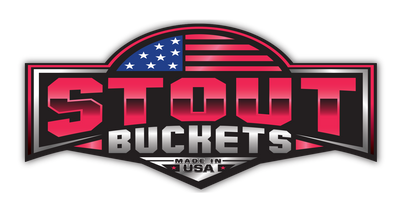Techniques for Using Skid Steer Buckets in Tight Spaces

Operating a skid steer in a spacious, open area might feel like a breeze. But finding yourself working in tight spaces, weaving around obstacles, and maneuvering through narrow paths? That’s a whole new challenge.
These techniques for using skid steer buckets in tight spaces will help you master the art and increase your efficiency on the job.
Route Planning
Start by evaluating where you need to go, the available space to maneuver, and any potential obstacles in your path. In restricted areas, even a small miscalculation can lead to unnecessary repositioning, wasted time, or even damage to surroundings. Look for natural or built-in paths, such as pre-cleared areas or openings, that allow the skid steer to move smoothly without requiring constant adjustments.
Visualize the turns you’ll need to make and keep the known limitations of your skid steer in mind, such as its turning radius, bucket width, and loader arm range. Be especially mindful of low-hanging obstacles, narrow doorways, or sharp corners, which can require extra precision.
A well-thought-out route minimizes wasted time and reduces the risk of accidents, such as hitting obstacles or tipping over. It also ensures that you can effectively complete the task without having to stop frequently to re-evaluate your approach.
Removing Obstacles
Before starting, carefully survey the area and remove any debris, tools, or objects that could block your path or interfere with your movements. This is especially important in narrow spaces, where even small items can create big challenges.
For immovable obstacles, such as trees, walls, fences, or utility poles, take the time to plan your workflow to avoid backing into or scraping against them. Mark these hazards clearly or use spotters to help guide you when working in particularly tight quarters.
Remember, the tighter the space, the more critical it is to have a clear path and a well-thought-out approach. Taking these steps ahead of time will allow you to operate your skid steer bucket with greater ease and precision, minimizing the risk of costly mistakes or downtime.
Clear Visibility

Ensure your sightlines are as clear as possible. This means checking your surroundings, keeping your cabin windows and mirrors spotless, and working in well-lit conditions. Always aim to operate during daylight when visibility is naturally better, or ensure you have proper nighttime lighting if working after dark.
For situations where visibility is still compromised, consider using additional tools, such as spotters or cameras. Having a clear view of the bucket attachment and the space ahead is essential for precision and preventing accidents.
Working Within Load Capacity
Overloading your machine impacts balance and maneuverability, which are already harder to manage in cramped spaces. Stay well within the rated limits for your skid steer and attachment.
An overloaded skid steer tips easier, stresses the hydraulic system, and greatly reduces operational safety. Whether you’re removing soil, gravel, or debris with a heavy-duty skid loader bucket, knowing the weight you’re carrying will ensure smoother, safer work.
Lowered Bucket Attachment
When moving through tight or confined areas, position your skid steer bucket closer to the ground. By keeping the bucket low, you significantly increase the machine's stability, reducing the likelihood of tipping. This is especially important when operating on sloped or uneven terrain, where the risk of imbalance is higher. A low bucket provides a lower center of gravity, which helps maintain control even in challenging conditions.
A lowered bucket also improves visibility, allowing you to monitor the space around your skid steer more effectively. This can prevent accidental impacts with obstacles, structures, or equipment in your path. Better clearance awareness can save both time and money by avoiding damage to the machine or the work environment.
Additionally, keeping the bucket low minimizes the chance of materials spilling or falling unexpectedly. Dropped materials can cause delays, create hazards for other workers, and may lead to costly cleanups.
Bucket Tilting

When navigating tight spaces, precise bucket control is essential. A slight forward or backward tilt can significantly improve the bucket's clearance, making it easier to maneuver without scraping walls, equipment, or ground surfaces in cluttered environments.
Not every situation requires a flat bucket approach and understanding how your specific skid steer reacts to tilting will allow you to make smoother, more efficient movements. With careful use of bucket tilting, you can better distribute loads, reduce damage risks, and clear spaces with precision, even in the most confined environments.
Slow, Controlled Movements
Moving too quickly or making sudden, jerky actions can lead to overcorrections or even cause damage to nearby structures or equipment. By maintaining a steady pace, you give yourself the time to react appropriately if something unexpected happens, such as uneven ground or obstacles in your path.
Smooth transitions through turns, starts, and stops are especially important when working in confined areas, as they help you avoid wear on the machine and reduce the risk of tipping or spilling material from the bucket. Always focus on precise, controlled motions to navigate tight corners and confined spaces with confidence and efficiency.
Zero-Radius Turns
One of the standout benefits of skid steers is their ability to execute zero-radius turns. Unlike larger machines with wide turning arcs, skid steers pivot within their own footprint. Use this feature to your advantage.
When you're in a tight space, plan to utilize turns in place wherever needed. The key here is to ensure the area you're turning in is stable and clear. Otherwise, the sharp pivoting motion could wear into soft ground or disturb fragile surroundings.
Counter Steering
Counter steering can make a world of difference when maneuvering your skid steer through intricate paths. Adjusting the wheels in opposite directions allows you to fine-tune movements with precision.
This technique helps align your bucket to difficult angles and keeps your machine steady even in challenging spaces. Whether repositioning dirt or carving out a pathway, counter steering becomes second nature once you practice it enough.
Build Confidence with Proper Techniques
The techniques for using skid steer buckets in tight spaces can become second nature with time and experience. With practice, you can increase your speed and accuracy when working with the machine. As a result, you'll feel more confident in your abilities and become a more efficient operator.
To get the most out of your skid steer, make sure you're using the best tools for the job. At Stout Buckets, we offer high-quality bucket attachments built for durability and precision. Choose from our lineup of skid loader buckets today.


